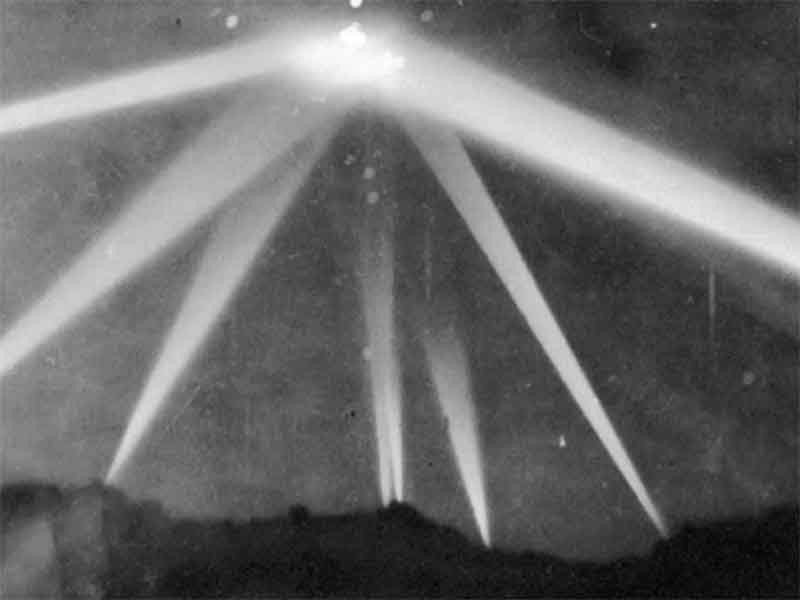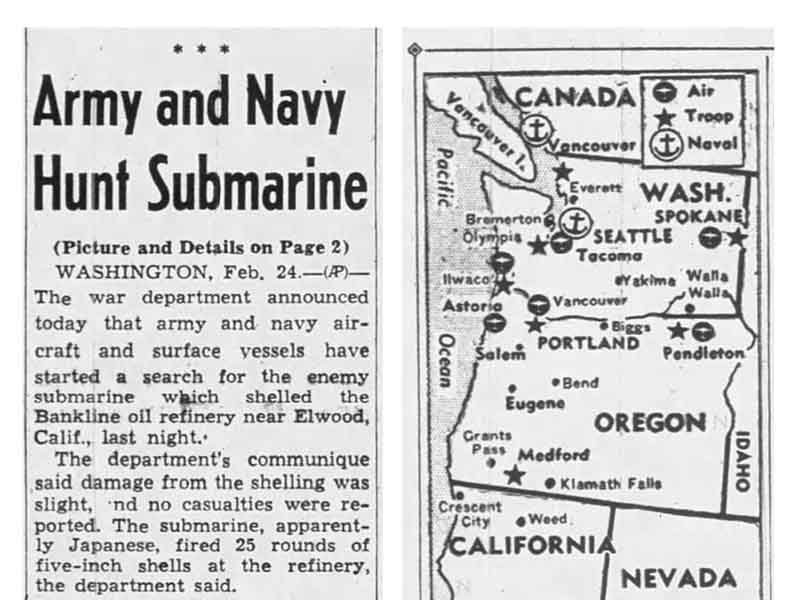The Battle of Los Angeles
During the early morning hours of February 25th, 1942, the U.S. military launched over 1,400 rounds of anti-aircraft fire into the night sky above Los Angeles amidst widespread confusion and panic. Conflicting eyewitness accounts, inconsistencies in DOD explanations, and a famous LA Times photograph have long served to fuel speculation that the object in the sky was in fact a UFO. Post-war Japanese officials denied having been in U.S. airspace during this time.
Building Tensions
On February 23, 1942, a Japanese submarine fired dozens of shells onto an oil field in Goleta, California, just north of Santa Barbara. Known as the Bombardment of Ellwood, this shelling--combined with several naval skirmishes with Japanese subs in the preceding weeks--had American air defenses at the ready. A formal alert was issued by the Office of Naval Intelligence on February 24 stating that a Japanese attack on the American mainland was likely within the next ten hours; this alert was lifted approximately three hours later, leaving both civilian and military populations in a frenzied state.
The Great Los Angeles Air Raid Starts
On the morning of February 25th at around 2:30 AM, anomalous observations on a brand new military technology--radar--stirred tense American defenses to the brink of live fire. These radar sightings were corroborated with multiple visual sightings of unidentified craft and strange lights off the coast. Air-raid sirens blared out as land-based spotlights and anti-aircraft artillery fire lit up the skies around Los Angeles over the course of the next 90+ minutes in an attempt to locate and fire upon potentially hostile craft. One observer stated, "the air...erupted like a volcano" amidst the barrage. Over 1,400 anti-aircraft rounds were fired into the night sky, with no direct hits recorded.
Public panic ensued in one of the most eventful nights the U.S. homeland saw during WWII. Five civilian fatalities were recorded, the result of heart attacks and traffic accidents during the panic. Hundreds of witnesses claimed to see craft(s) in the sky, some describing them as moving at speeds well below what an airplane would fly at, with others claiming the craft(s) were at a standstill in midair.
Secretary of the Navy Frank Knox reported that the entire event was a mistake and was the result of heightened war nerves. However, Army official George C. Marshall filed a report to President Roosevelt stating that defenses fired upon up to 25 unidentified craft. Many witnesses reported seeing a large craft in the night sky that did not move throughout the course of the event, and an iconic photograph from the night shows numerous spotlights trained on what appears to be a saucer-shaped object. Eyewitness accounts, inconsistencies in DOD explanations, and the famed LA Times photograph have long served to fuel speculation that the object in the sky was in fact a UFO. Post-war Japanese officials denied having been in US airspace during this time.The official report from the U.S. Office of Air Force History blamed a weather balloon and heightened nerves as the trigger of the air raid.


































